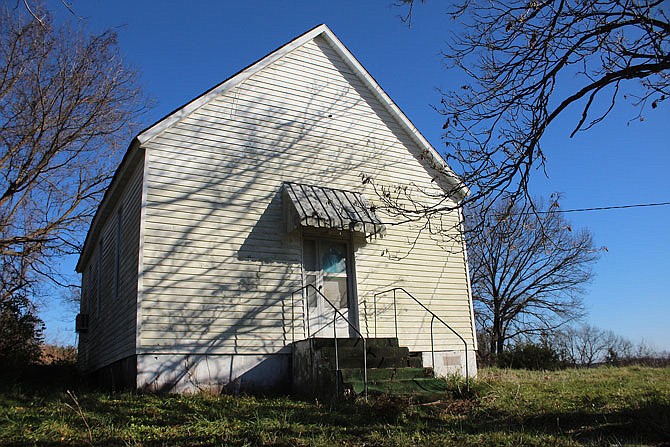Follow along as the Fulton Sun visits each location in the Great Callaway 200 Scavenger Hunt from the Kingdom of Callaway Historical Society.
Callawegians have until Friday to race to 20 historical locations across the county. From early settlement and Civil War battles to religious communities and commerce, these places represent two centuries of county history.
On Nov. 25, the historical society will have a $200 prize drawing for participants in the scavenger hunt. To have a name entered, post photos to the Great Callaway 200 Scavenger Hunt Facebook page with the tag #Callaway200, email photos to [email protected] with Scavenger Hunt Photo in the subject line or bring your printed photos to the KCHS Museum at 513 Court St. in Fulton.
To be eligible, submit a selfie at all 20 locations by 11:59 p.m. Friday.
Today, the newspaper is featuring one of the locations highlighted in the scavenger hunt - Oakley Chapel.
Oakley Chapel in Tebbetts is a historic African Methodist Episcopal Church dating back to 1878. The structure, a gable front church, has remained largely unaltered and reflects a time when the church was the center of a rural African American community.
The first of several African Methodist Episcopal churches established in the county after the end of slavery, Oakley was also the last active AME church in the county. AME is a predominately African American denomination founded by free black Christians in response to discrimination within white denominations.
In 1830, 24 percent of the people in Callaway County were enslaved. The number and percentage of enslaved people in the area continued to grow, reaching a peak of 28.4 percent of the population in 1850.
After the Civil War, many freed slaves left the county, and the Black population dropped to 18 percent of the county's residents. Those that stayed put down roots.
In 1877, Caleb Bush, Harrison Farmer and Solomon Tarlton purchased an acre of land to set aside for the construction of a church - all three bore the surnames of Callaway County slave owners.
William L. Kidwell, a white landowner who himself had possessed 12 people by the time he was 25, sold the land to the men for a token $1.
Oakley's first pastor was Ben McCollough. The church became the center of the rural Black community, bringing together even those who were not members for revivals and suppers, providing an outlet for entertainment, news, education and fellowship.
Several families living on "the ridge" west of the church and in "the hollow" north and east of the building, as well as others from across Cote Sans Dessein and neighboring townships attended the church.
Members of the Ferguson, King, Pannell, Farmer, Hord, Cave, Franklin, Harland, Garthright, Bartley, Smith, Nash, Endicot and Ewen families were all laid to rest in the church's cemetery before 1950.
Despite a decline in the African American population in rural Callaway County, Oakley Chapel thrived in the 1950s and 1960s under the leadership of the Rev. Marjorie L. Casson.
Learn more about the hunt at callawaymohistory.org/scavenger- hunt.

